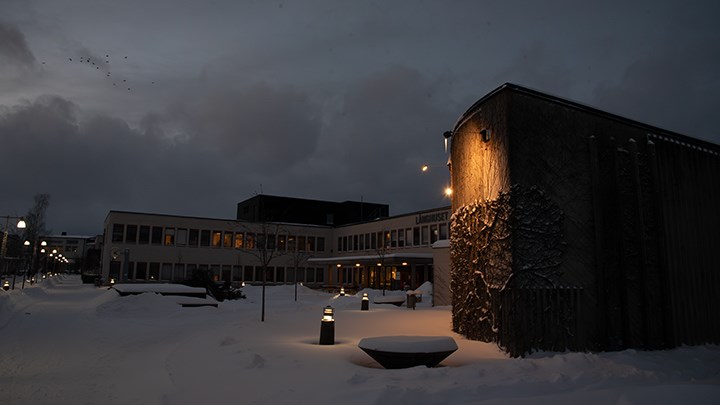Here is how Örebro University’s three campuses will develop in the future

Örebro University will continue to grow over the next ten years. Growth will focus on renovations, not just on constructing new buildings. This is detailed in the campus plan jointly developed by Örebro University and the property company, Akademiska Hus.
Örebro University and its main property owner, Akademiska Hus, have outlined priorities for the future development of the university’s three campuses in a joint campus plan.
Campus Örebro is the largest and is located on the outskirts of Örebro. The university’s other campus activities are located at Örebro University Hospital (USÖ) in central Örebro and in Grythyttan, in the northern part of Örebro County.
The overarching goals for the three campuses are to create world-class learning and research environments, vibrant and identity-strong campuses, and to ensure development within planetary boundaries within resilient and sustainable solutions.
“We anticipate that our number of students will continue to increase. However, future teaching and research will, in new ways, place demands on our facilities,” says Rickard Ålund, head of property and facilities at Örebro University.
The longest building may grow taller
An important method for gathering data for the new plan has been the thousands of sensors placed around Campus Örebro. These measure, for example, how often different spaces are used over time.
Today’s buildings are deemed sufficient for the needs over the next ten years. However, much will take place going forward, including adaptations to new teaching methods, renovations, and possibly expansions.

One building that could see new development is Långhuset, which stretches along most of Campus Örebro. While the building is in need of modernisation, there is potential to add a third floor to this long yet low-lying building.
“Långhuset is Campus Örebro’s backbone, and the new campus plan proposes development to enhance its role and functionality, making it more welcoming and accessible for everyone on campus,” says Anna-Karin Anderwall, property manager at Akademiska Hus.
“Bring campus to life”
Central to the new development plan is ensuring that the entire campus is utilised. Poorly used spaces will receive a clearer purpose and function and include efforts to make underutilised indoor areas more functional and improve outdoor environments for increased use.
Navigating the campus will also become easier with better-designed walking paths and entries to the campus area.
“We want to bring the campus to life. A place where people want to meet while providing opportunities for focused study when needed,” explains Rickard Ålund, Örebro University.
By 2040, Akademiska Hus aims to achieve net zero. This involves a 90 per cent reduction in greenhouse gas emissions compared to 2019, with the remaining 10 per cent neutralised through negative emissions. The ongoing focus on environmentally friendly solutions and reduced energy use will continue.
“To achieve this, energy efficiency will play a key role. More importantly, it’s about using our existing properties more effectively. New construction is not the first choice, and we ensure that any new space we create is, in fact, needed,” says Anna-Karin Anderwall at Akademiska Hus.
Benefiting from the scenic surroundings
At Campus Grythyttan, discussions about creating a more distinct campus area are ongoing. The buildings are a little further apart and situated in a beautiful scenic environment. There is potential to create better connections between its buildings and use the outdoor spaces for recreation, study, and research. An existing garden already provides locally-grown vegetables for the culinary programme.
Campus USÖ is located at Örebro University Hospital, where a significant extension was completed as recently as 2023. The development of buildings here will take place in the longer term, in dialogue with the property owner, Region Örebro County and the parties involved in developing the nearby CV area.
The campus plan stretches to 2035 and indicates areas with potential development that could become important for the university.
Today, large, strategically located spaces are used as parking lots. If parking can be resolved differently in the future, this would open expansion opportunities. Removing temporary building structures in the coming years will also free up space and create new possibilities.
“In the long term, there’s still plenty of room for the university to continue growing. We are optimistic about the future,” says Rickard Ålund.
Translation: Jerry Gray
